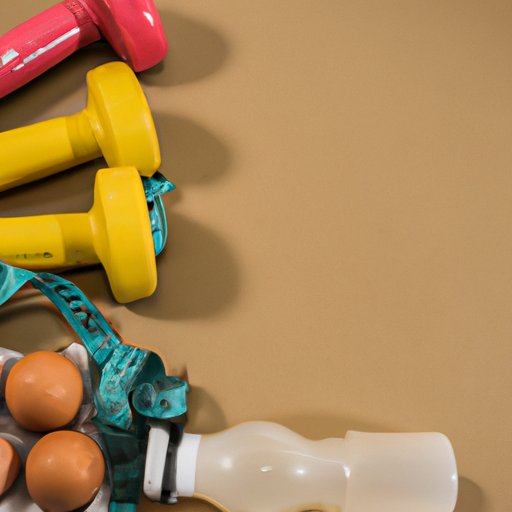
Introduction
Losing weight and gaining muscle are two of the most common fitness goals that people have. While these goals may seem contradictory, it’s possible to achieve both simultaneously with the right approach. In this article, we’ll explore the best tips and strategies to help you lose weight and gain muscle. Whether you’re a beginner or an experienced fitness enthusiast, this guide is for you.
Start with Goal-Setting
The first step towards achieving any fitness goal is to set SMART goals. SMART stands for Specific, Measurable, Achievable, Relevant, and Time-bound. Here are some examples of SMART goals for losing weight and gaining muscle:
– Specific: “I want to lose 10 pounds of body fat and gain 5 pounds of muscle in 3 months.”
– Measurable: “I will weigh myself every week and take progress photos to track my progress.”
– Achievable: “I will aim to lose 1-2 pounds of body fat per week and gain 1 pound of muscle per month.”
– Relevant: “I want to improve my overall health and fitness by reducing body fat and increasing muscle mass.”
– Time-bound: “I will achieve my goals in 3 months by following a consistent workout and nutrition plan.”
Incorporate Strength Training
Strength training is essential for both muscle growth and weight loss. By incorporating resistance exercises into your fitness routine, you can build lean muscle mass, boost your metabolism, and burn more calories. Here are some different types of strength training exercises and routines to consider:
– Compound exercises: These are exercises that work multiple muscle groups at once, such as squats, deadlifts, and bench presses.
– Isolation exercises: These are exercises that target specific muscle groups, such as bicep curls, tricep extensions, and calf raises.
– HIIT workouts: High-Intensity Interval Training (HIIT) is a type of workout that combines cardio and strength training in short bursts of intense activity. This can help you burn more calories and build muscle simultaneously.
It’s important to gradually increase the intensity of your strength training routine over time. This can help you avoid injury and see better results. Aim to increase the weight or reps of your exercises every 1-2 weeks.
Stress the Role of Nutrition
Nutrition plays a critical role in both muscle growth and weight loss. To achieve your goals, it’s important to eat a balanced diet that supports your fitness routine. Here are some types of foods that can help you lose weight and gain muscle:
– Protein: Protein is essential for muscle growth and repair. Aim to eat 1-1.5 grams of protein per pound of bodyweight per day.
– Complex Carbohydrates: Complex carbs provide energy for workouts and can help you maintain muscle mass. Examples include brown rice, quinoa, and sweet potatoes.
– Healthy Fats: Healthy fats such as avocados, nuts, and olive oil can help you feel fuller for longer and support hormone balance.
In addition to the types of food that you eat, it’s also important to pay attention to portion control, meal timing, and water intake. Eating smaller, more frequent meals throughout the day can help you maintain stable blood sugar levels and keep your energy up. Staying hydrated is also important for overall health and can help you avoid overeating.
Highlight the Importance of Rest and Recovery
Rest and recovery are critical for muscle growth and weight loss. When you exercise, you create tiny tears in your muscle fibers. Rest and recovery allow your body to repair and regenerate these fibers so that they grow back stronger. Here are some tips for ensuring adequate rest and recovery:
– Prioritize Sleep: Aim for 7-8 hours of sleep per night. Lack of sleep can increase stress hormones and make it harder to lose weight.
– Take Rest Days: Rest days are an essential part of any fitness routine. Aim to take at least 1-2 rest days per week to allow your body to recover.
– Incorporate Active Recovery: Active recovery methods such as stretching, foam rolling, and yoga can help reduce soreness and improve flexibility.
Offer Tips on Staying Motivated
Staying motivated is key to achieving your weight loss and muscle gain goals. However, it’s normal to experience setbacks and obstacles along the way. Here are some tips for staying motivated and accountable:
– Track Your Progress: Keeping a log or journal of your workouts and nutrition can help you stay on track and see progress over time.
– Work with a Trainer or Partner: Having support and accountability from a trainer or workout partner can help you stay motivated and push past plateaus.
– Find Support: Joining a fitness community or finding a mentor can help you stay motivated and accountable on your fitness journey.
Provide Examples of Successful Weight Loss and Muscle Building Stories
To help inspire and motivate you, here are some success stories of people who have achieved their weight loss and muscle gain goals:
– John lost 20 pounds of body fat and gained 10 pounds of muscle in 6 months by following a consistent workout and nutrition plan. He focused on compound exercises and incorporated HIIT workouts into his routine.
– Sarah lost 15 pounds of body fat and gained 5 pounds of muscle in 3 months by following a balanced diet and strength training routine. She tracked her progress and stayed motivated by joining a fitness community.
– Mark lost 30 pounds of body fat and gained 15 pounds of muscle in 9 months by working with a trainer and focusing on progressive overload in his strength training routine.
Conclusion
Losing weight and gaining muscle can be challenging goals, but with the right approach, they’re achievable for anyone. By setting SMART goals, incorporating strength training, stressing the role of nutrition, prioritizing rest and recovery, and finding support and accountability, you can make steady progress towards your goals. Remember that everyone’s fitness journey is unique, and there’s no one-size-fits-all approach. Listen to your body, be patient, and stay motivated.





